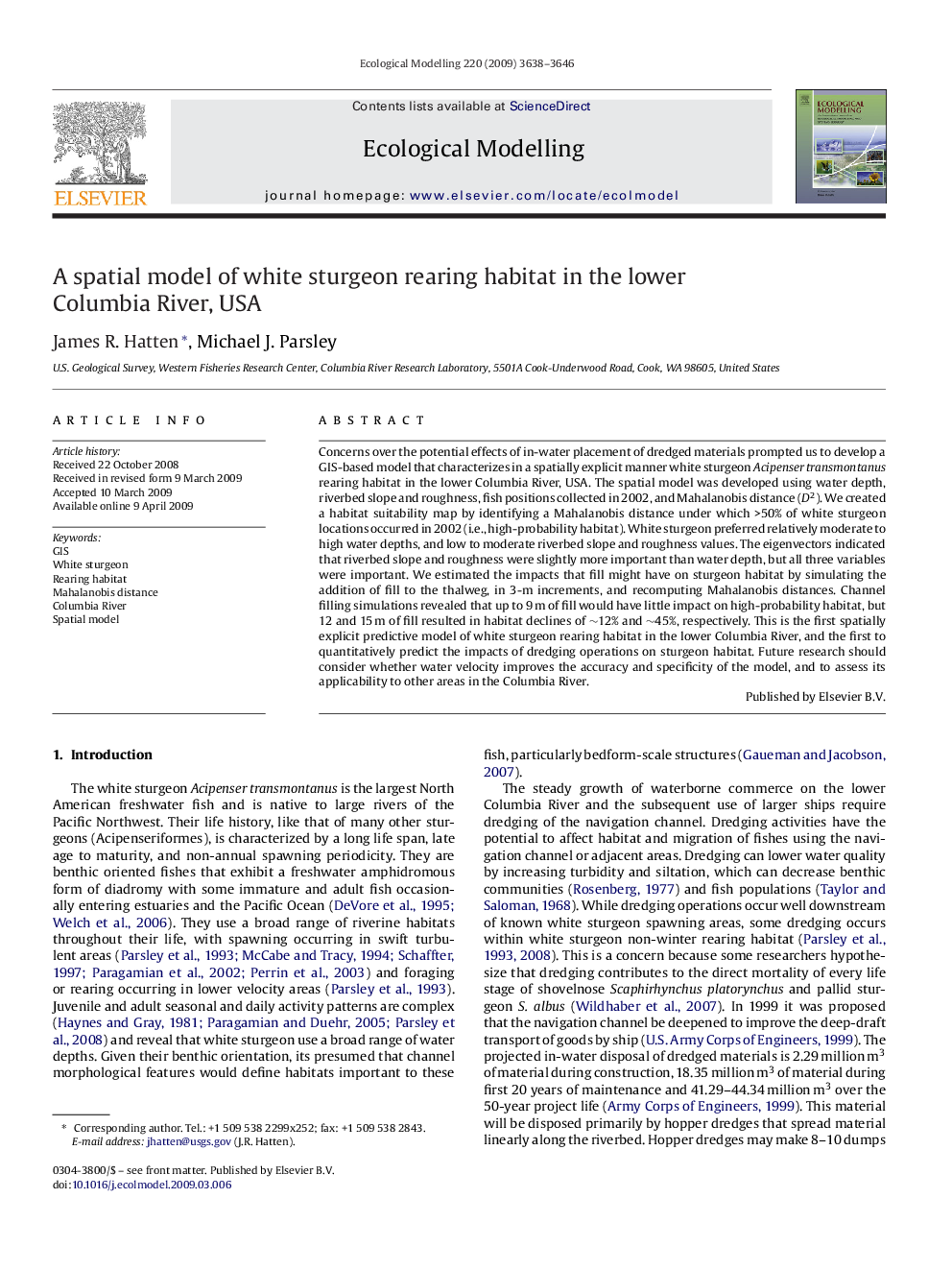| Article ID | Journal | Published Year | Pages | File Type |
|---|---|---|---|---|
| 4377520 | Ecological Modelling | 2009 | 9 Pages |
Concerns over the potential effects of in-water placement of dredged materials prompted us to develop a GIS-based model that characterizes in a spatially explicit manner white sturgeon Acipenser transmontanus rearing habitat in the lower Columbia River, USA. The spatial model was developed using water depth, riverbed slope and roughness, fish positions collected in 2002, and Mahalanobis distance (D2). We created a habitat suitability map by identifying a Mahalanobis distance under which >50% of white sturgeon locations occurred in 2002 (i.e., high-probability habitat). White sturgeon preferred relatively moderate to high water depths, and low to moderate riverbed slope and roughness values. The eigenvectors indicated that riverbed slope and roughness were slightly more important than water depth, but all three variables were important. We estimated the impacts that fill might have on sturgeon habitat by simulating the addition of fill to the thalweg, in 3-m increments, and recomputing Mahalanobis distances. Channel filling simulations revealed that up to 9 m of fill would have little impact on high-probability habitat, but 12 and 15 m of fill resulted in habitat declines of ∼12% and ∼45%, respectively. This is the first spatially explicit predictive model of white sturgeon rearing habitat in the lower Columbia River, and the first to quantitatively predict the impacts of dredging operations on sturgeon habitat. Future research should consider whether water velocity improves the accuracy and specificity of the model, and to assess its applicability to other areas in the Columbia River.
